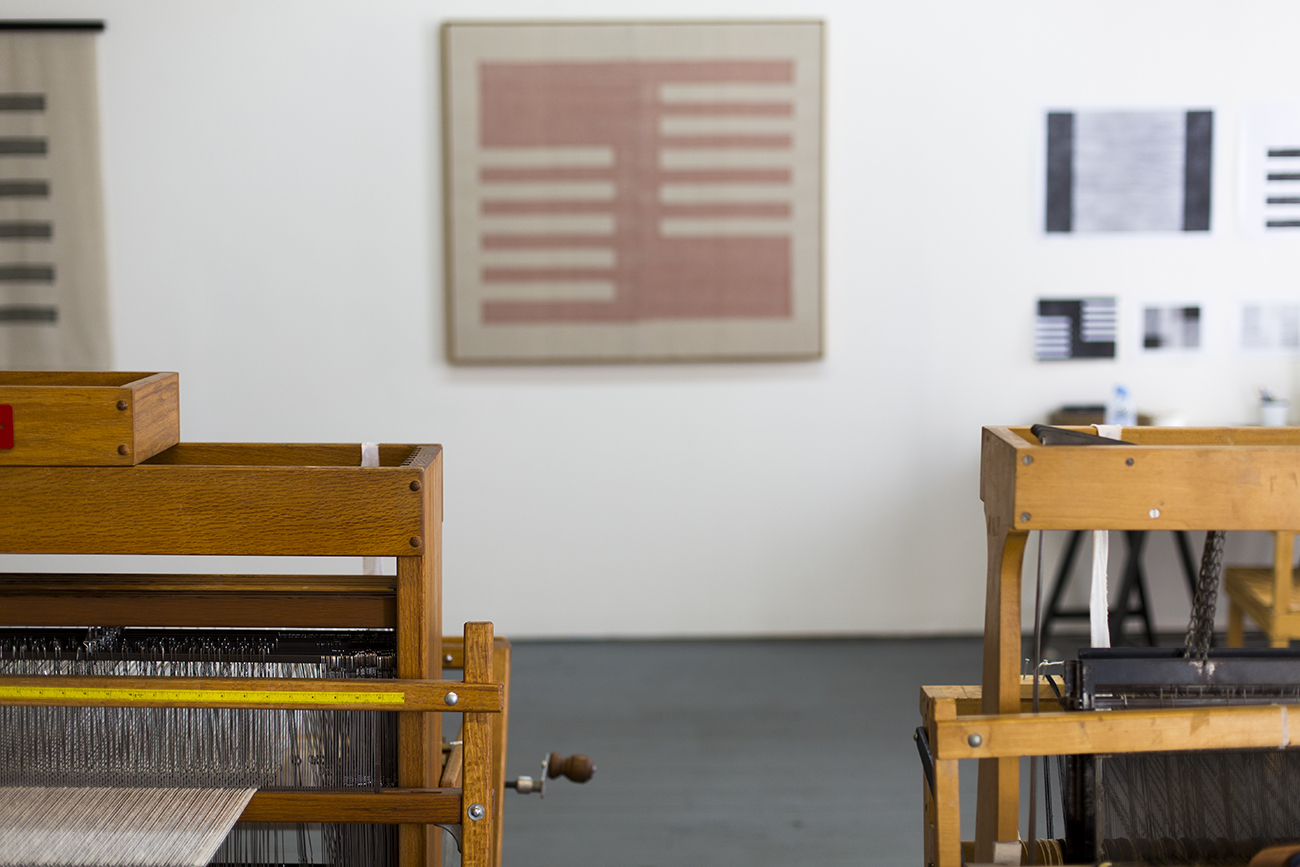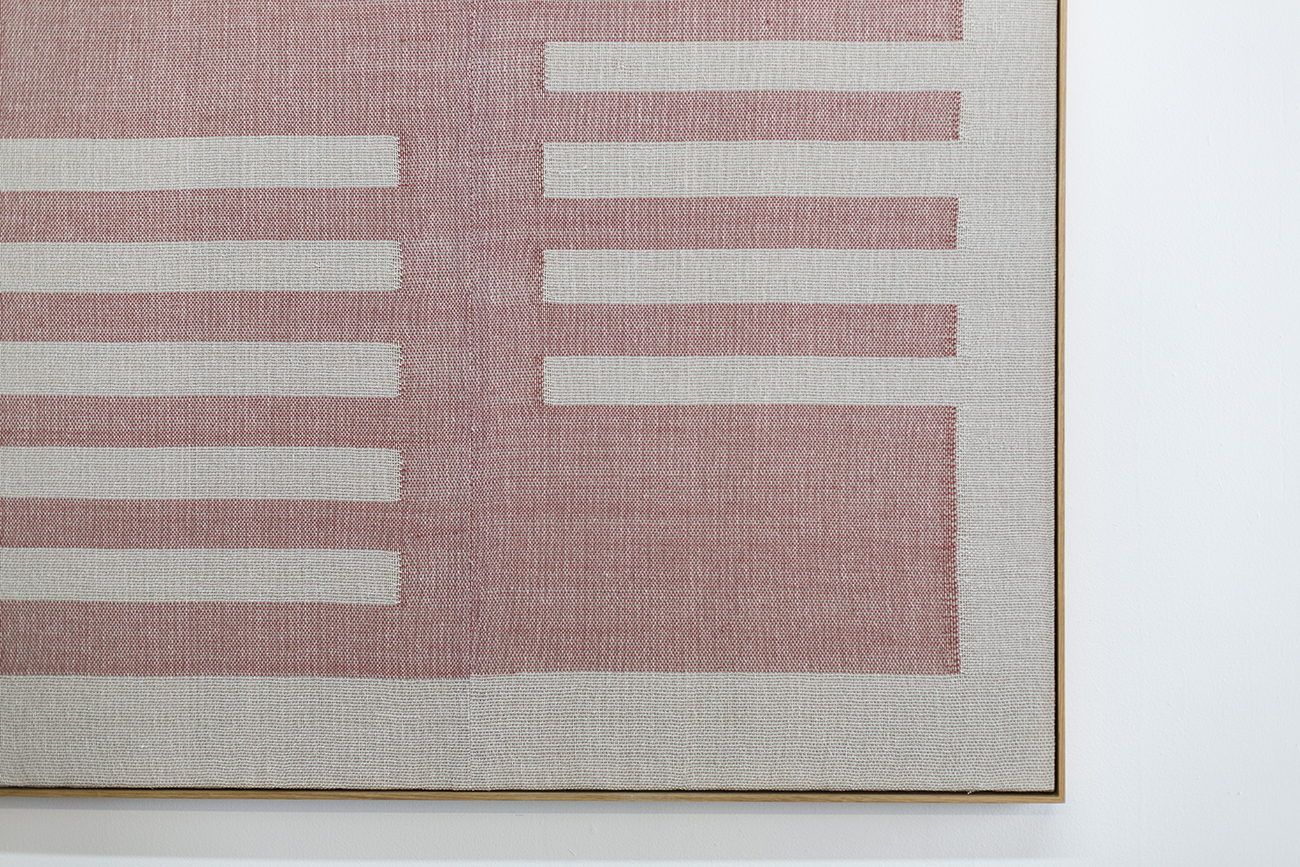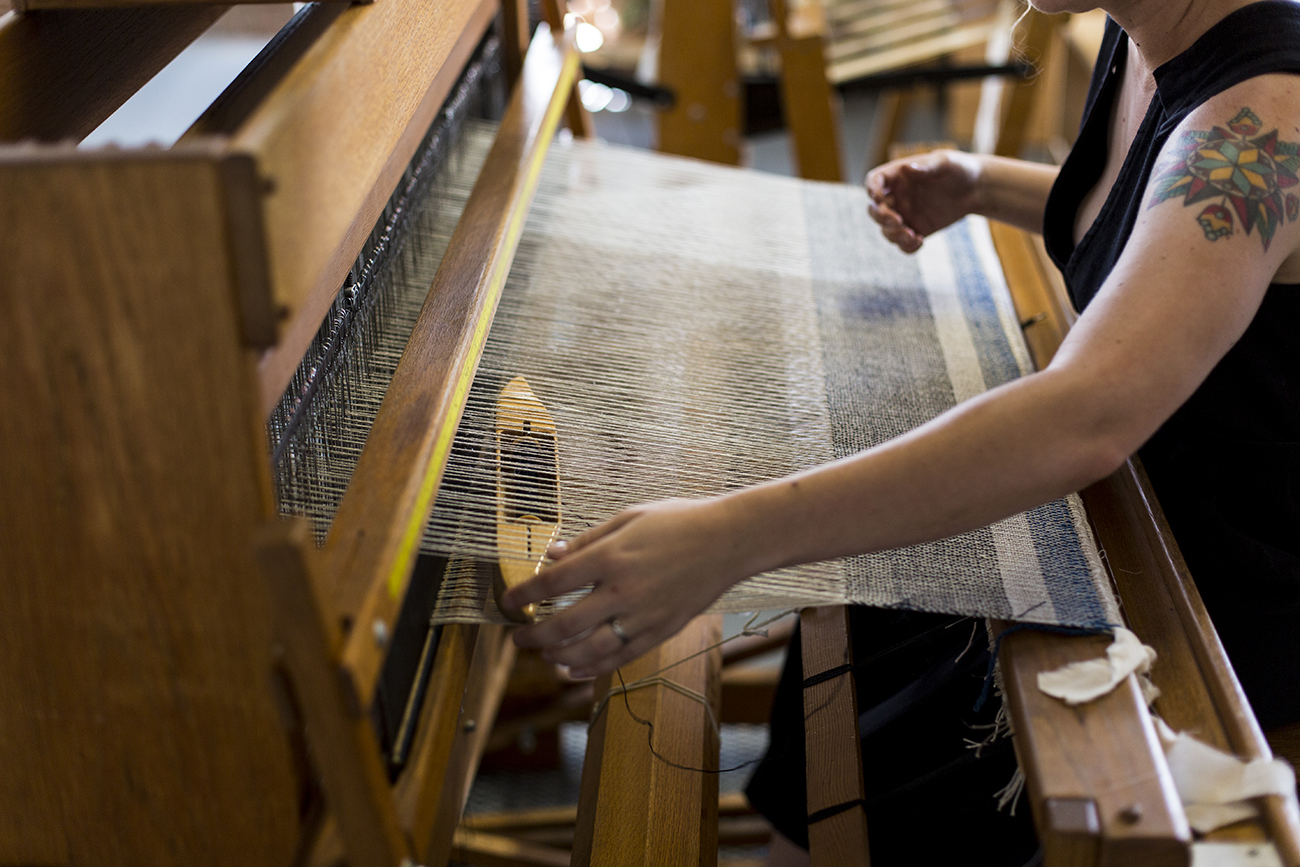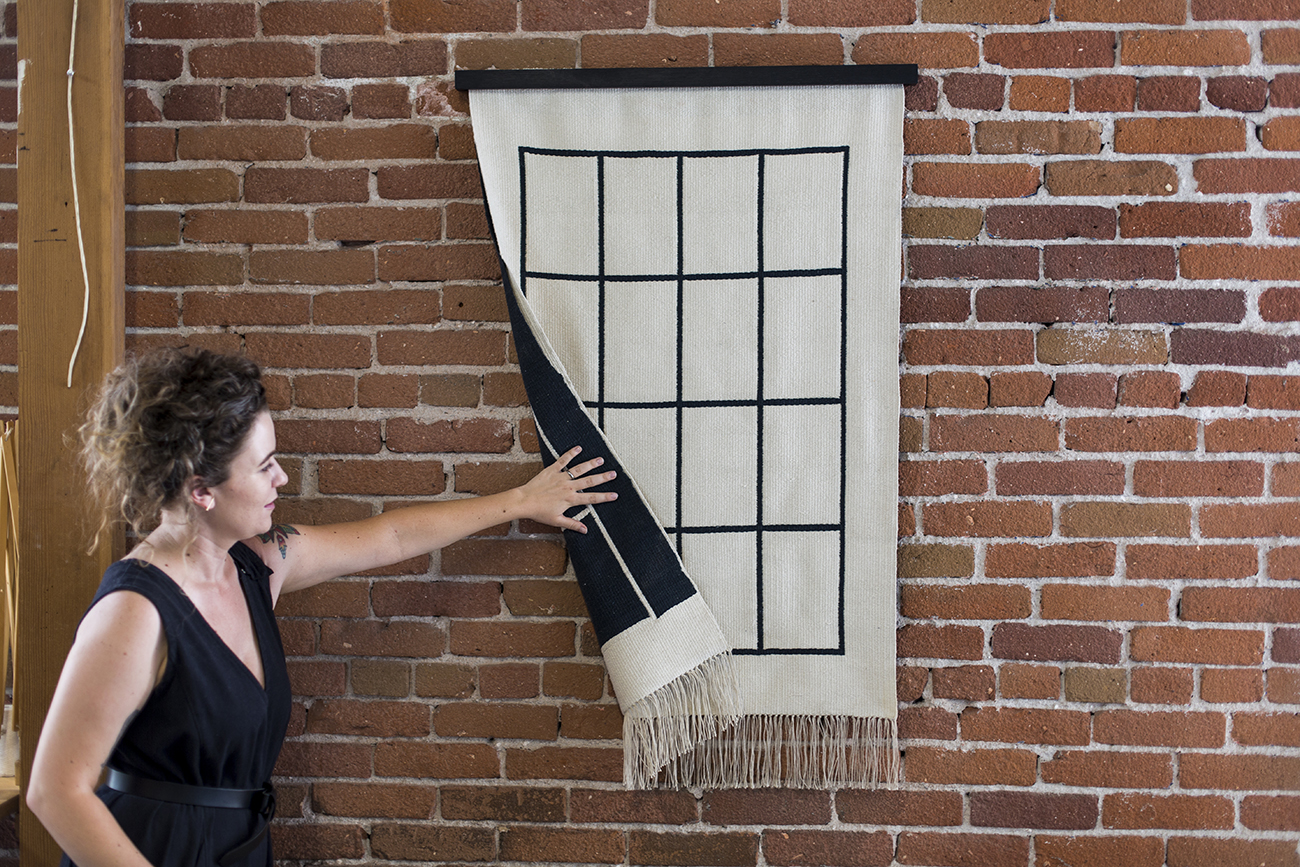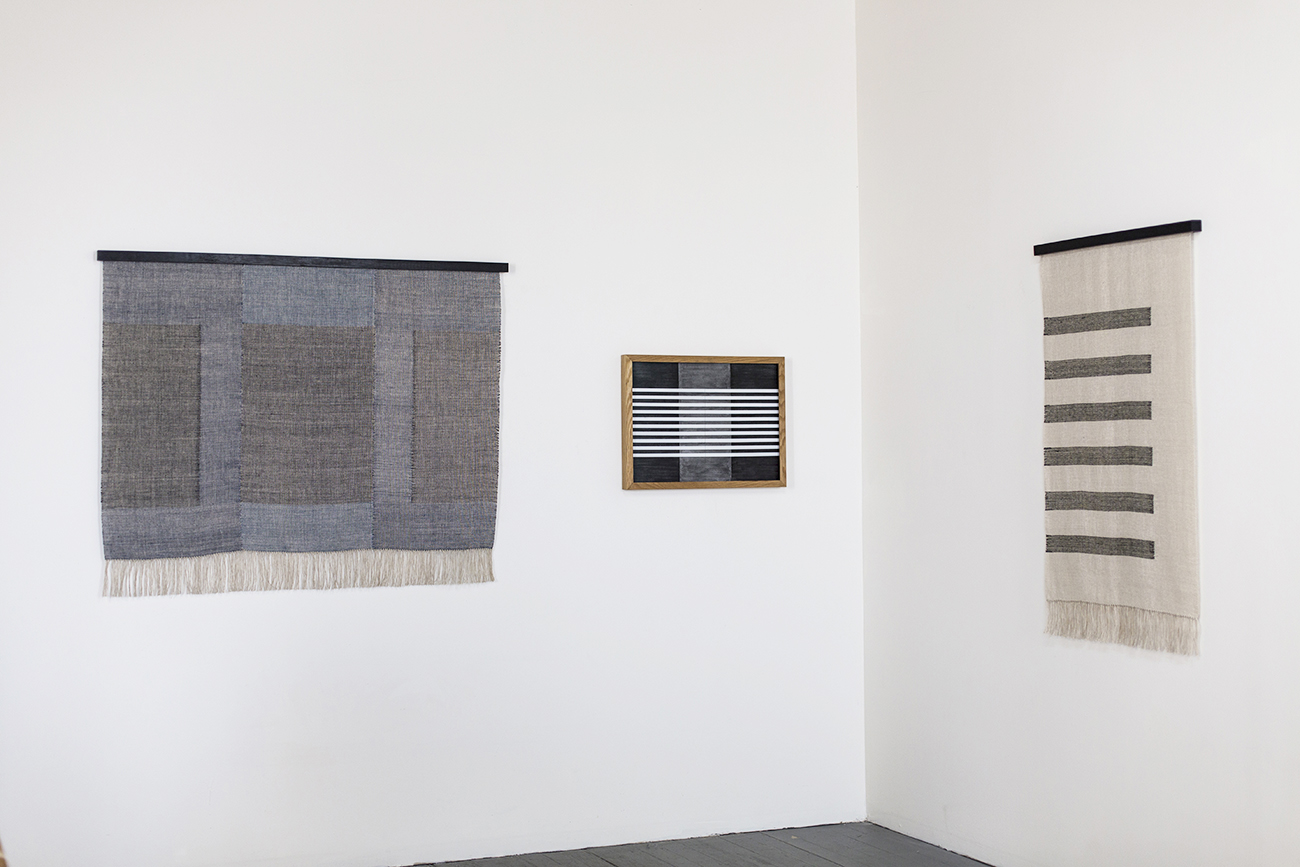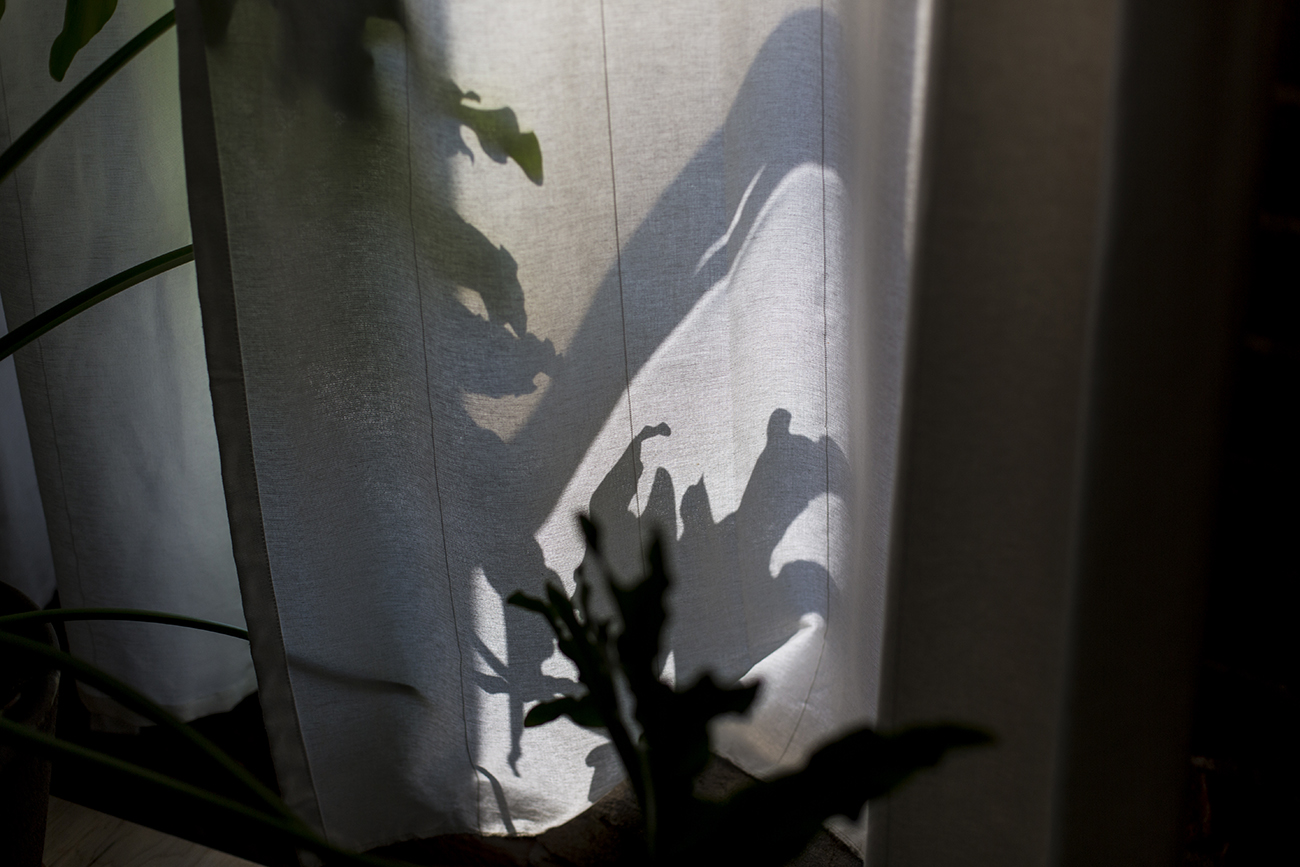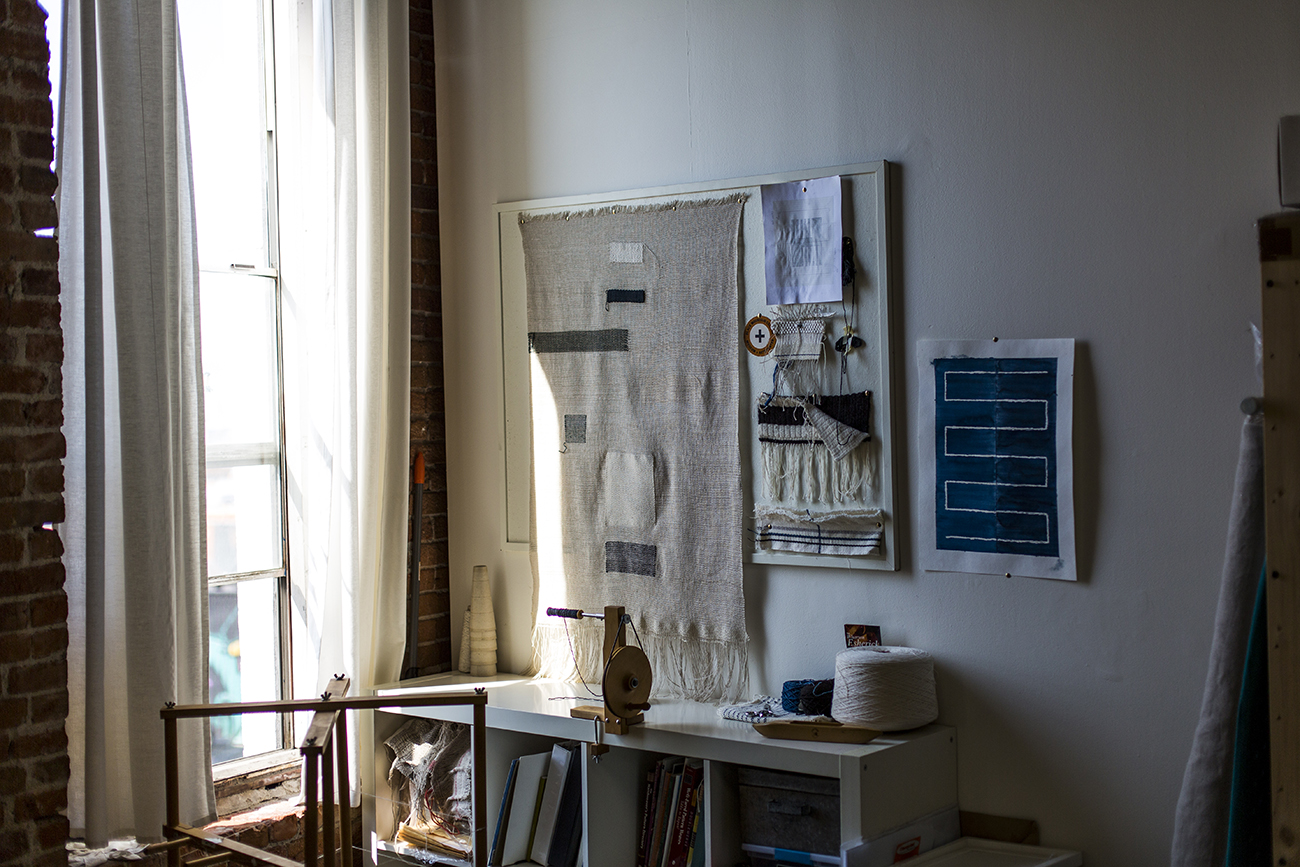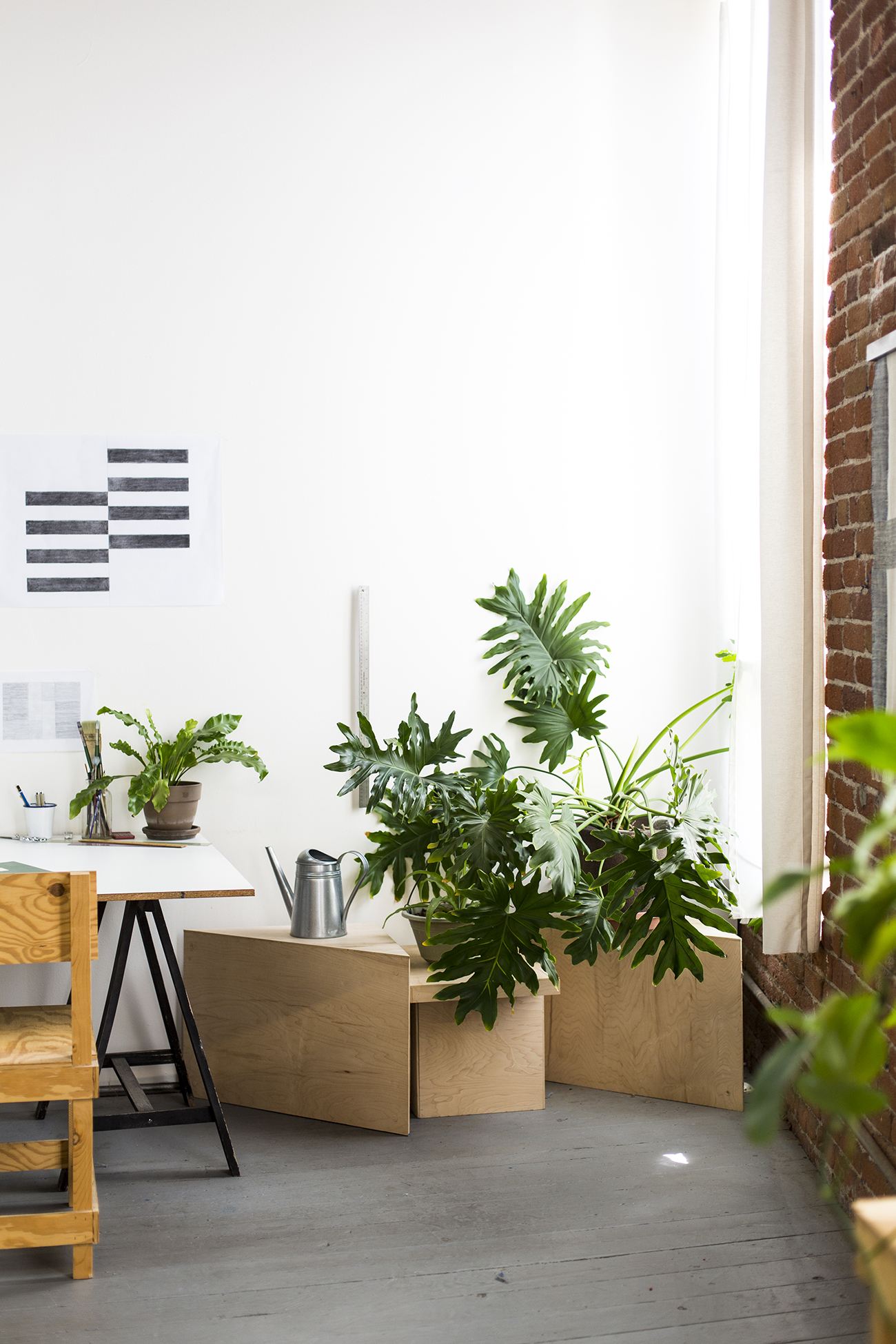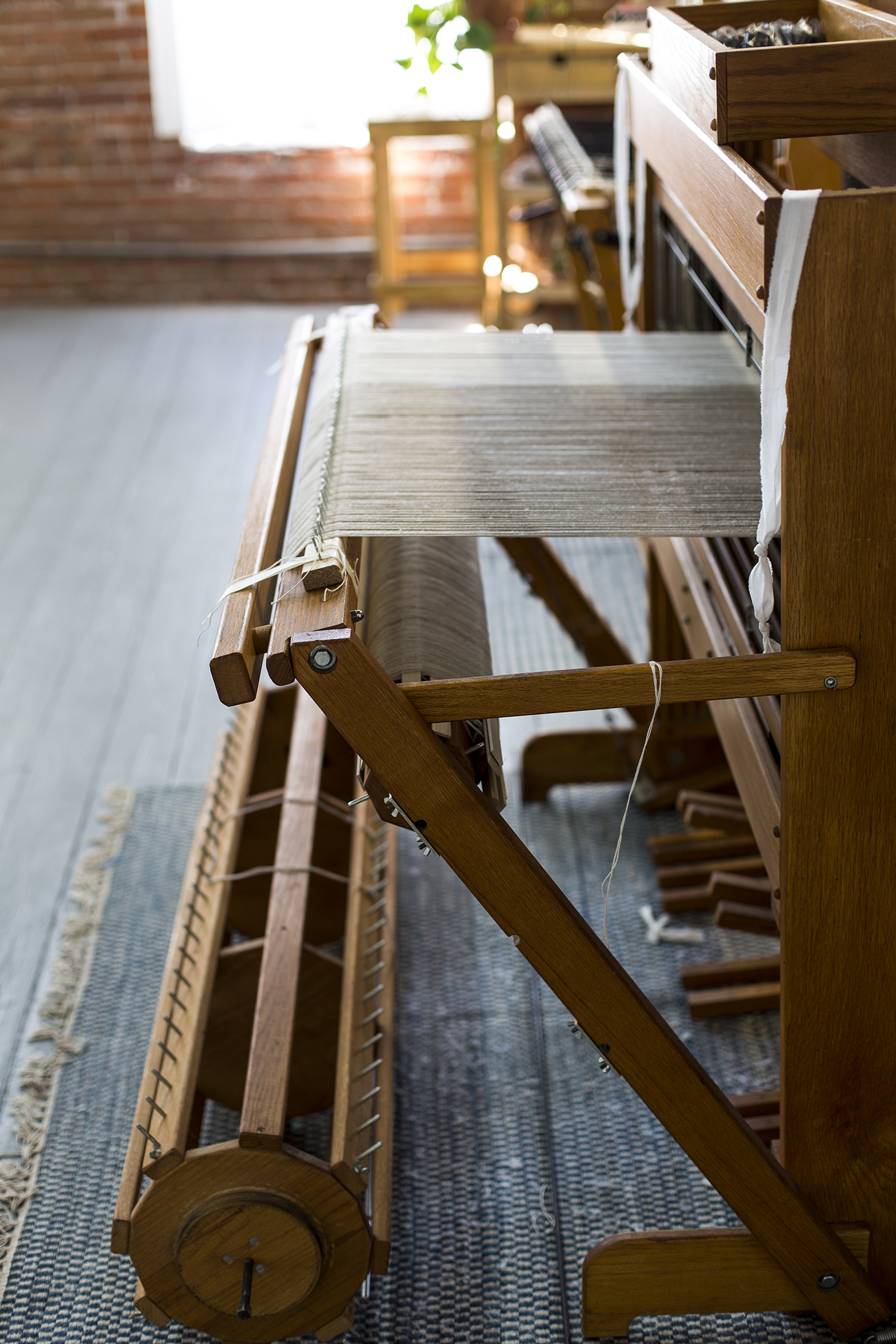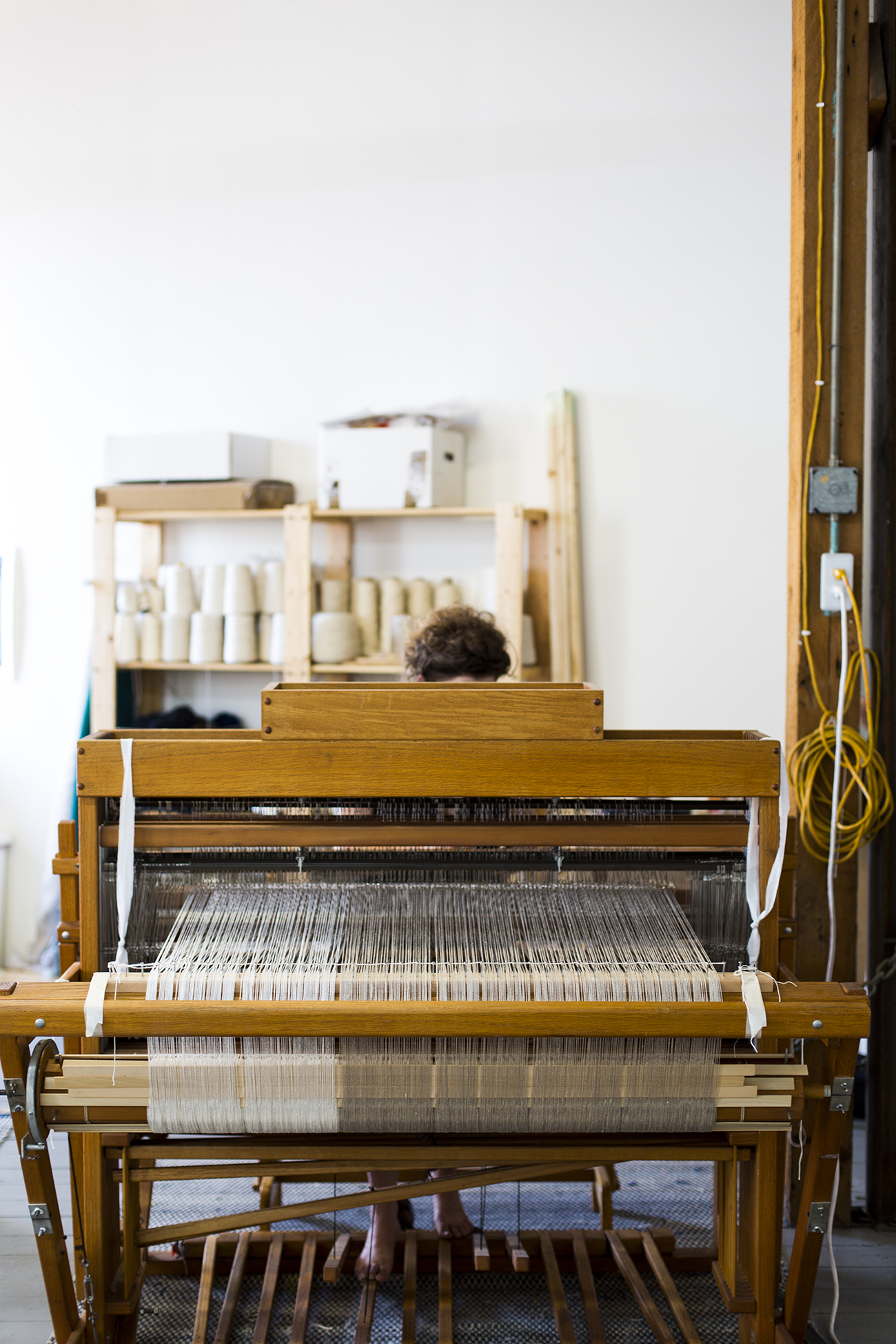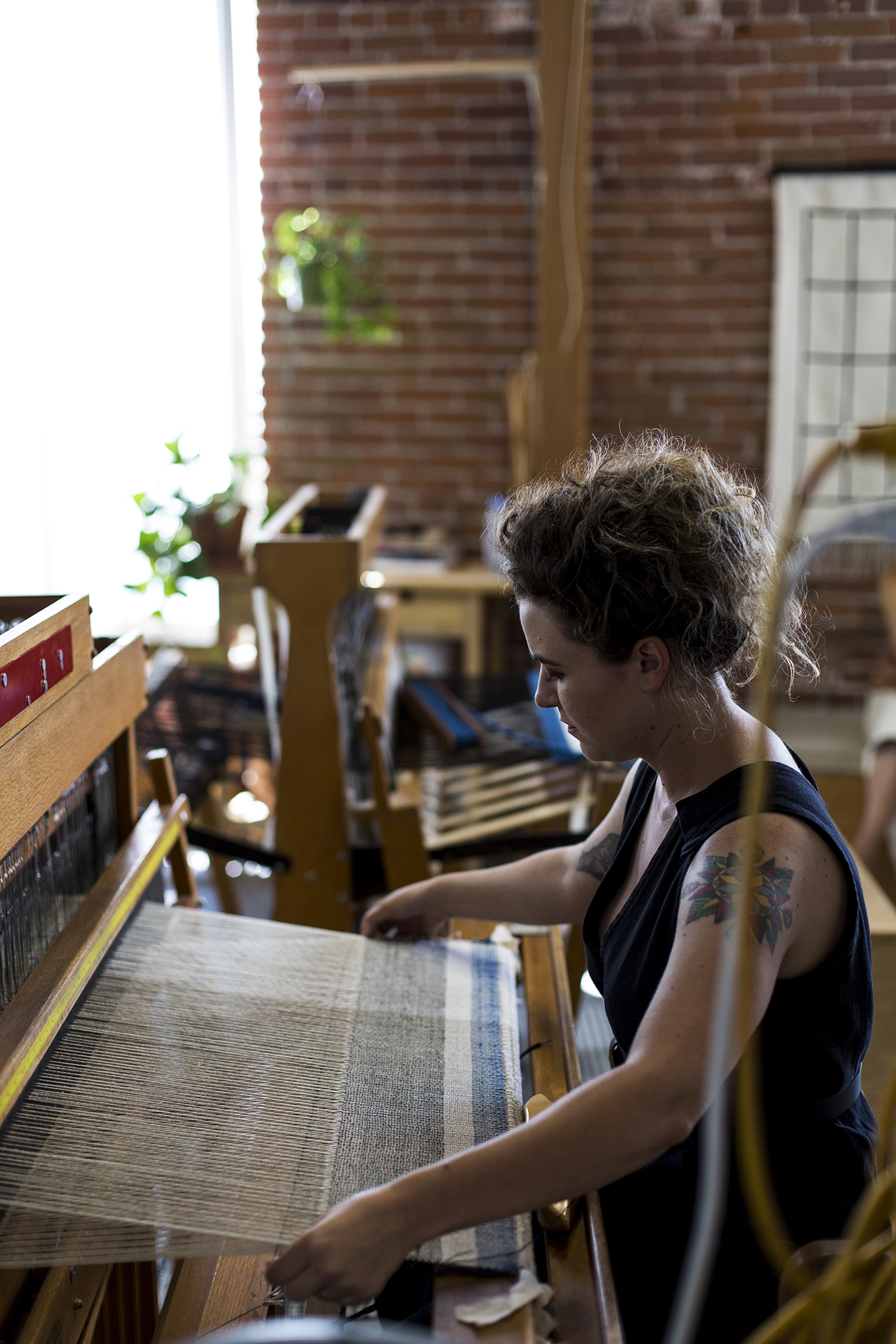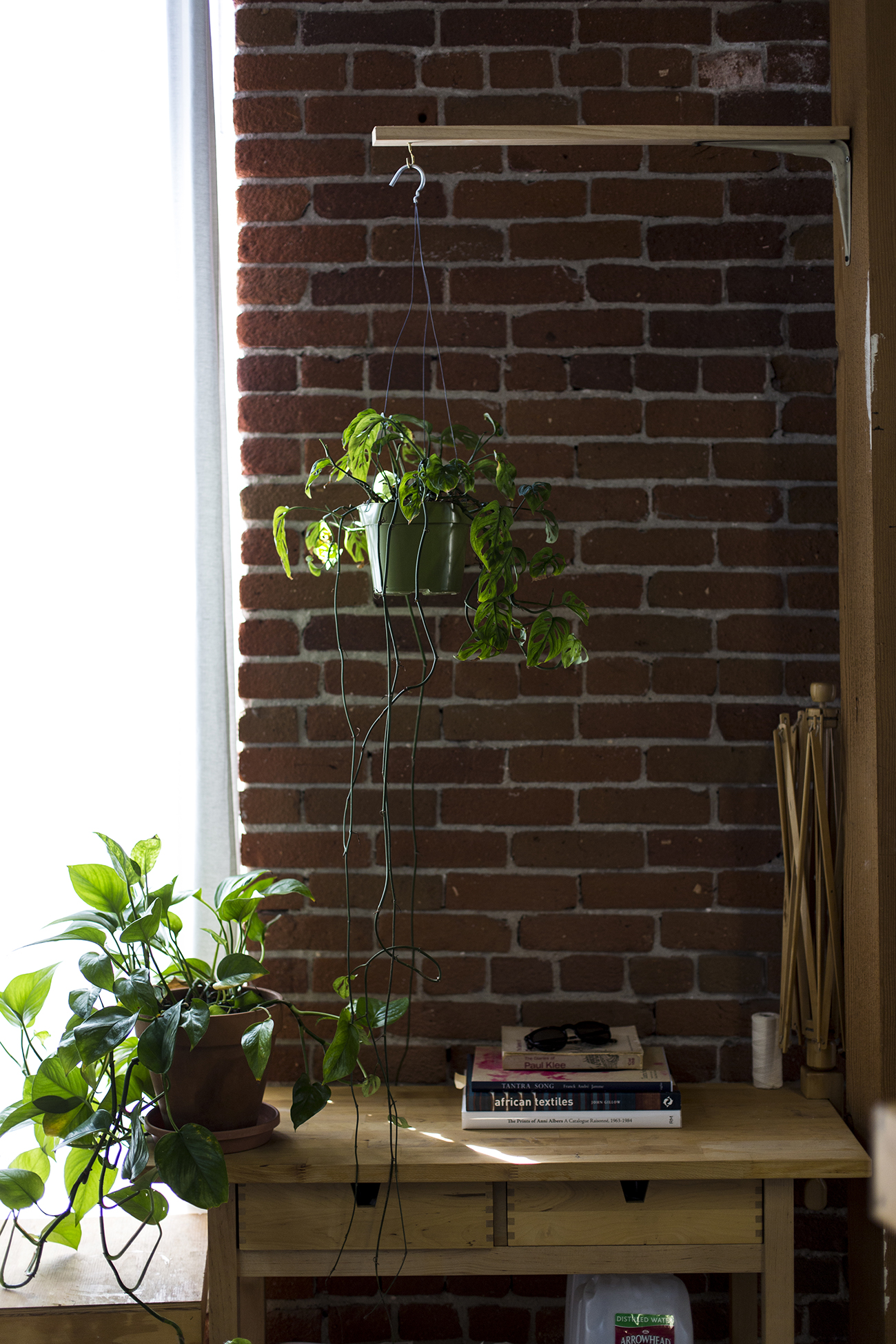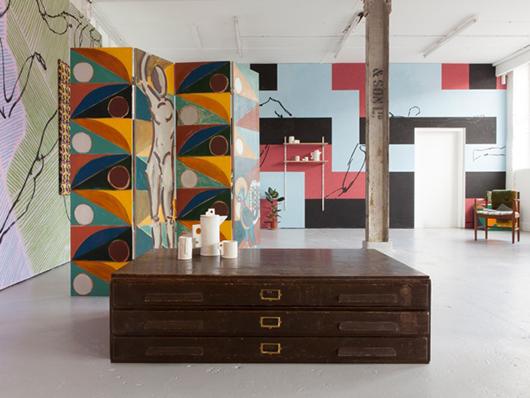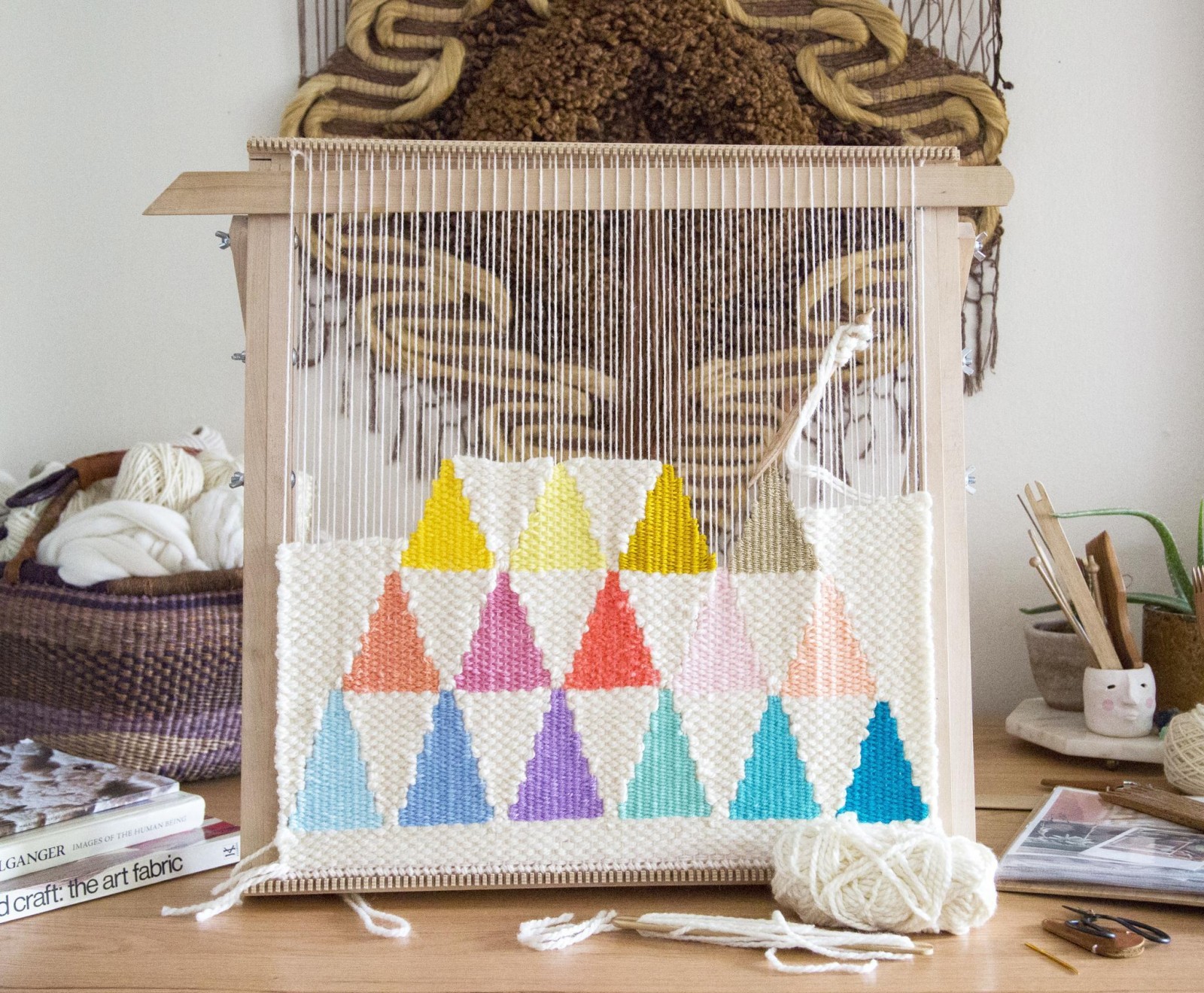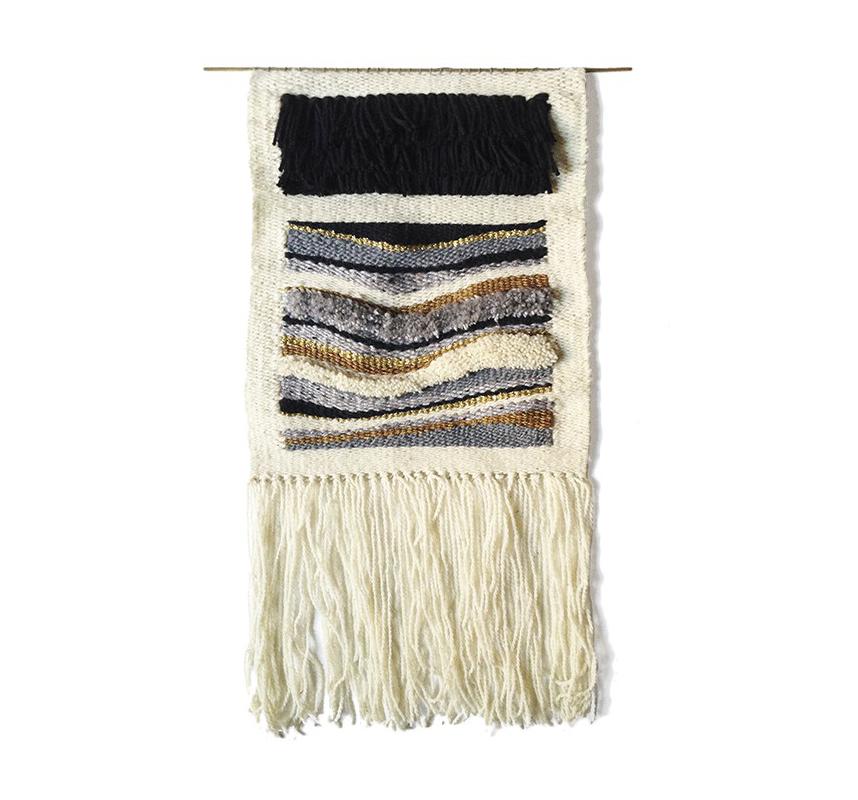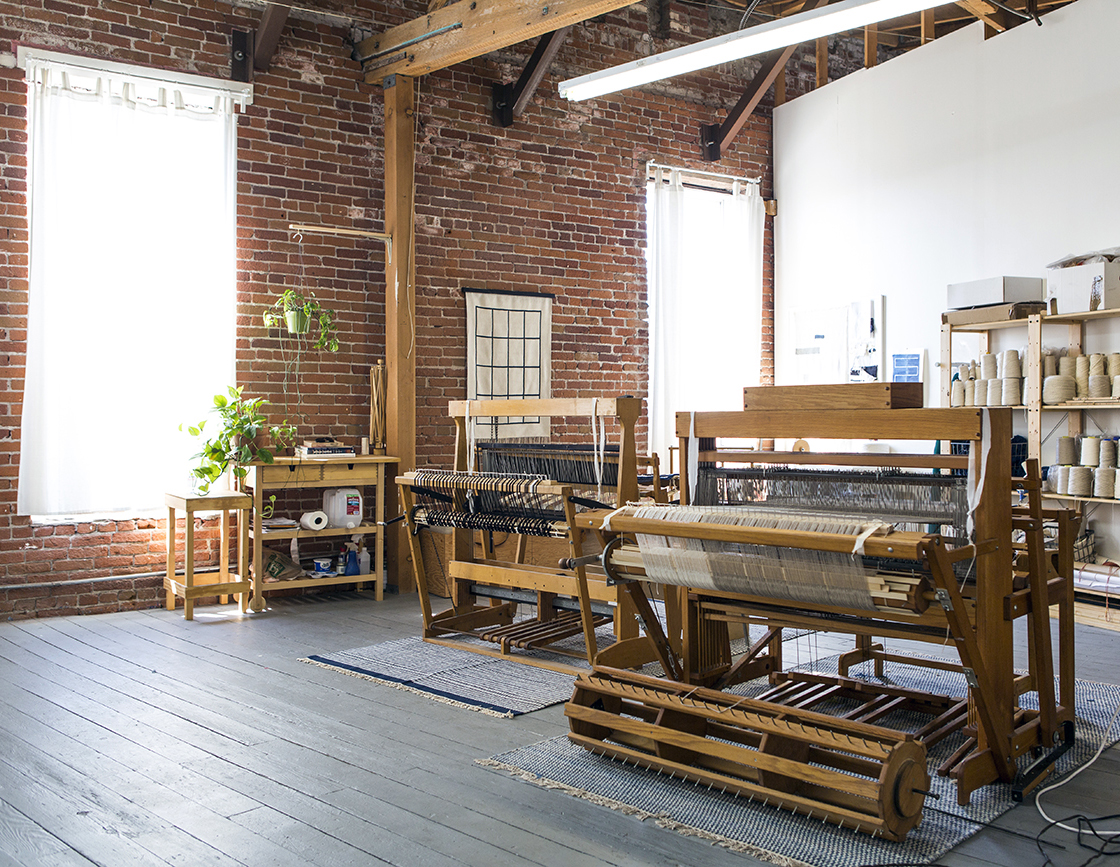
10.05.15
Studio Visit
Los Angeles Textile Artist Rachel Duvall
PHOTOS BY LAURE JOLIET
Since moving to Los Angeles five years ago, the artist Rachel Duvall has been refining an almost scientific approach to handweaving, based as much in foundational considerations like hue and line as in methodical chemical experimentation. She uses only natural dyes and modifiers such as copper and iron to “investigate the subtlety of colors,” she says, though the range she achieves — including a bright neon yellow and purple from fermented lichen she collects herself and then brews in her backyard — is striking, and a testament to her alchemical skill. From early textural explorations in raw alpaca fleece, she now only works in silk, wool and linen; she keeps folders of swatches annotated with dye proportions and specifics such as how many minutes each piece was submerged in a bath of madder root or osage or cochineal. Along a floor-to-ceiling window in her studio are loops of dyed string taped to the window, for up to a year, to “see how a particular formula holds up in the sun.”
“As I move forward with my work, I’ve sort of honed in more and more on the repetitive nature of it, building the piece line-by-line,” says Duvall, who draws inspiration from the transcendental reductionism in the paintings of Agnes Martin and from Sol LeWitt, whose permutative wall drawings included all the possible divisions of a square into four equal parts. Weavers, explains Duvall, are bound by a geometric framework, where every movement “naturally makes a grid from warp-and-weft crossing that you can fight against or investigate,” she says one early morning in her brick-clad studio north of Chinatown. For Duvall, who grew up on a goat farm in Pennsylvania before attending MICA in Baltimore, this tendency towards order favors not mechanization but the gentlest individualities, those fine gradations of detail that receive attention when other variables are stripped away. “Because everything else is so ordered and rigid,” she explains of paring down the elements in her work, “every little part where you see the hand stands out even more. Within repetition, it makes the differences stand out.”
Indeed, repetition in Duvall’s work is not only part of the process but also the subject matter, the pictorial forms in her latest series of hangings turning back and reflecting upon themselves, and almost lining up. “I’ve always been drawn to more system-oriented things,” says Duvall, who recently began working on a rare floor loom made by an engineer in Tarzana, with a custom adjustable-height bench. The weaving is controlled by the relative slackness or tension of the thrown line, as in hand looms, and also through pedals, like an organ: “You have to move your feet to create a pattern,” says Duvall, and she might also be describing another distinct rhythm within structure. The floor loom, she laughs, “makes a lot of music.”
